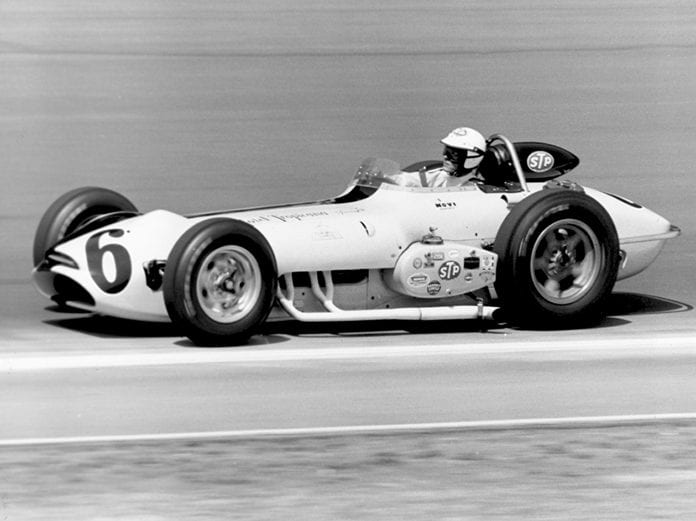“I know the reputation the Novis had,” three-time Indianapolis 500 winner Bobby Unser said about, perhaps, the most iconic cars in Indianapolis Motor Speedway history. “Drivers were afraid of them. And, for sure, they scared a lot of drivers.
“It was all that power,” continued Unser, his awe of the Novi he first drove as a rookie in 1963 still obvious. “It had power beyond belief. I could, easily, I mean easily, smoke the tires at 200 mph.
“I could see my tire marks all the way around the track from where I’d spun the tires on the previous lap. I saw where my groove actually was, not where I thought it was,” he laughed.
“Still, the Novi was the easiest car I ever drove,” Unser insisted. “I’d been struggling in a s _ _ _ box of an Offy roadster all month. When I drove the Novi for the first time, I thought I’d died and gone to heaven.
“It was so smooth. Much smoother than the Offy,” Unser explained. “It had a steady flow of horsepower and the power just kept climbing. Half way down the straight the power was still gaining like hell. When I shut off to make the corner, it was still gaining.
“It was so fast. My first three laps in the Novi were faster than any I’d run with that Offy. I didn’t know where the end of it was, in other words, how fast I could go. But I knew it would be quick.”
Unser was still searching for the “end of it” when he qualified on the third day as the fifth fastest in the field. That run made him an overnight sensation and a speedway favorite.
The Novi had a way of doing that. Few race cars have captured the imagination and played on the emotions like the Novi. In its 25-year run at Indianapolis, it made heroes of a few, but left many more with broken hearts, broken dreams and broken bodies.
Ralph Hepburn was the first driver indelibly linked to the Novi. In 1941, Lew Welch commissioned former Miller engineer Leo Goossen to design and Fred Offenhauser to build a V-8 overhead cam, centrifugally supercharged 450-horsepower engine, which he shoehorned into a front-wheel-drive Miller originally designed to carry a 160-horsepower Ford stock block. Welch hired Hepburn to tame the brute.
Hepburn shrewdly limited the throttle travel with a wood block under the pedal. He reasoned that it would prevent him from inadvertently unleashing all that power in the heat of battle, causing untold problems. He wrestled it to fourth place.
In 1946, following World War II, Hepburn was in a new car powered by the Novi engine, and when he shattered the track record by nearly four mph in the long, sleek, front-wheel-drive Kurtis chassis the fans’ unrelenting love affair with the Novi exploded.
In Hepburn’s 1947 absence, the Novi earned the reputation as the car too tough to tame. Welch added a second Novi and at least five different drivers saw seat time, including future 500 winner Sam Hanks. Most stepped out, declaring the cars too dangerous.
Hepburn returned in 1948, but while practicing his Novi inexplicably jumped from under him and pounded the unforgiving concrete. He died instantly.
That same year the driver whose name is most often connected to Novi lore joined the team — Duke Nalon. He qualified fastest and ran in front on race day. However, he was forced to pit for fuel unexpectedly and finished third.
In later years, Nalon explained the key to “taming” the Novi was “respecting but not fearing all that power.” It was a lesson only a few learned.
Click below to keep reading.
